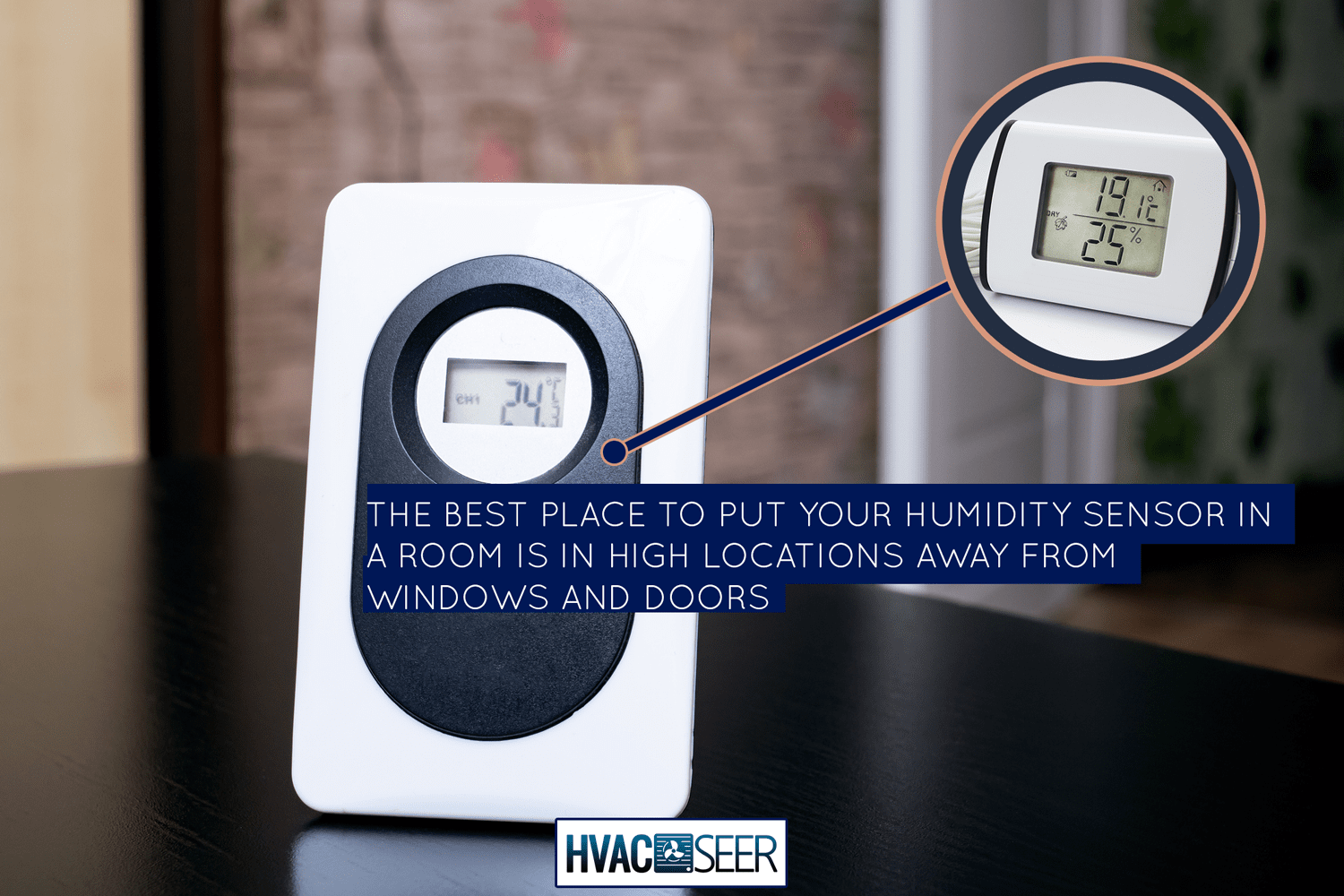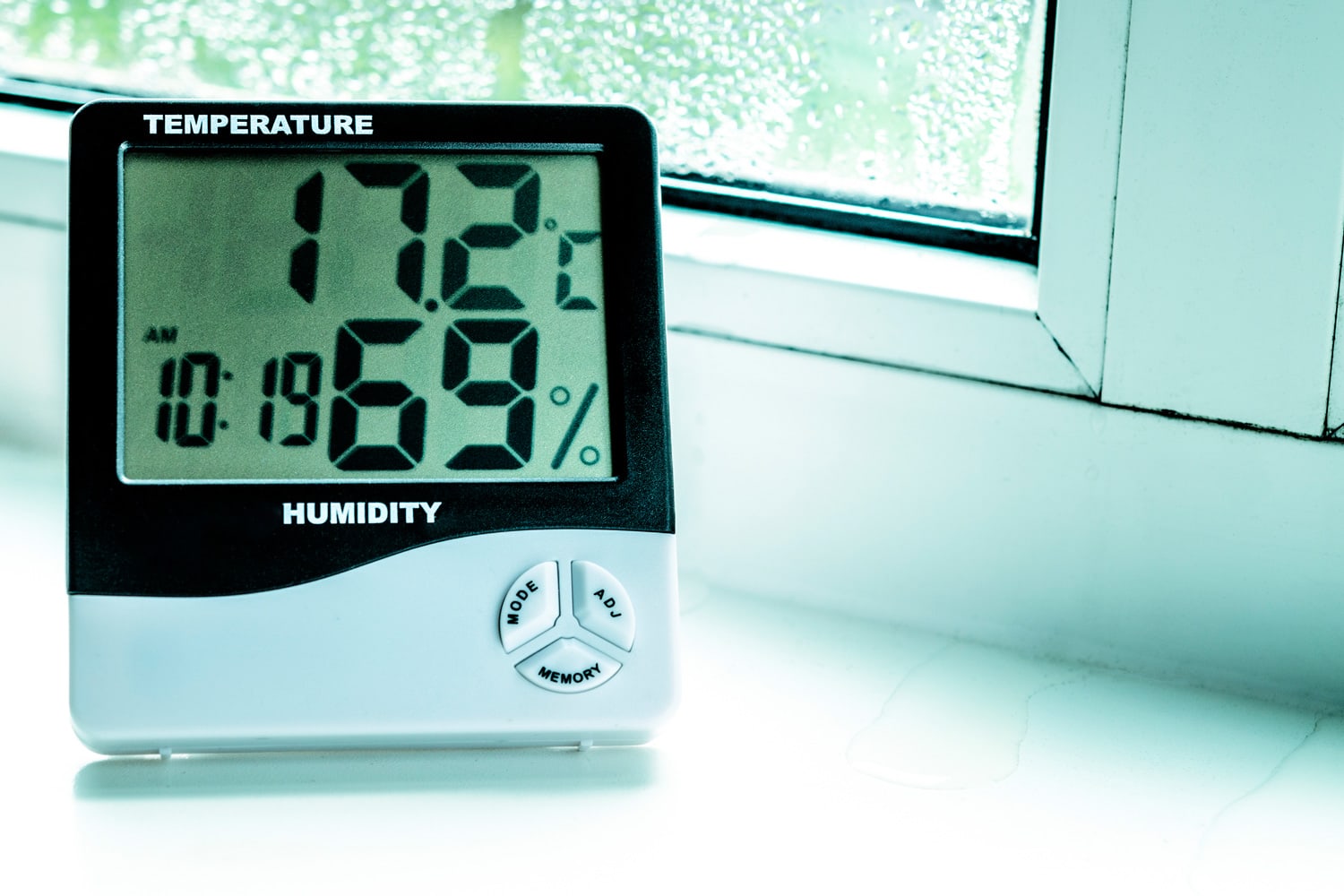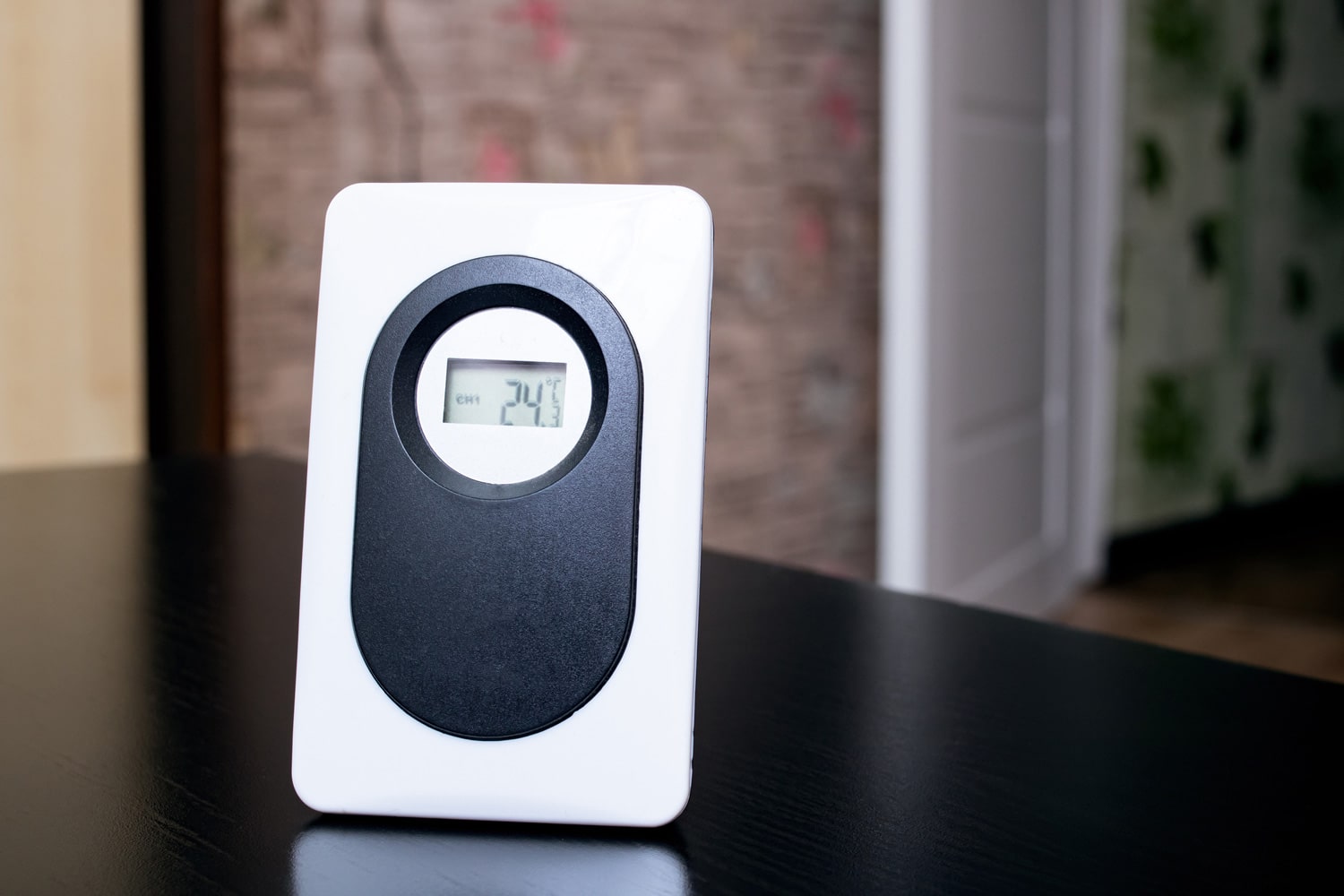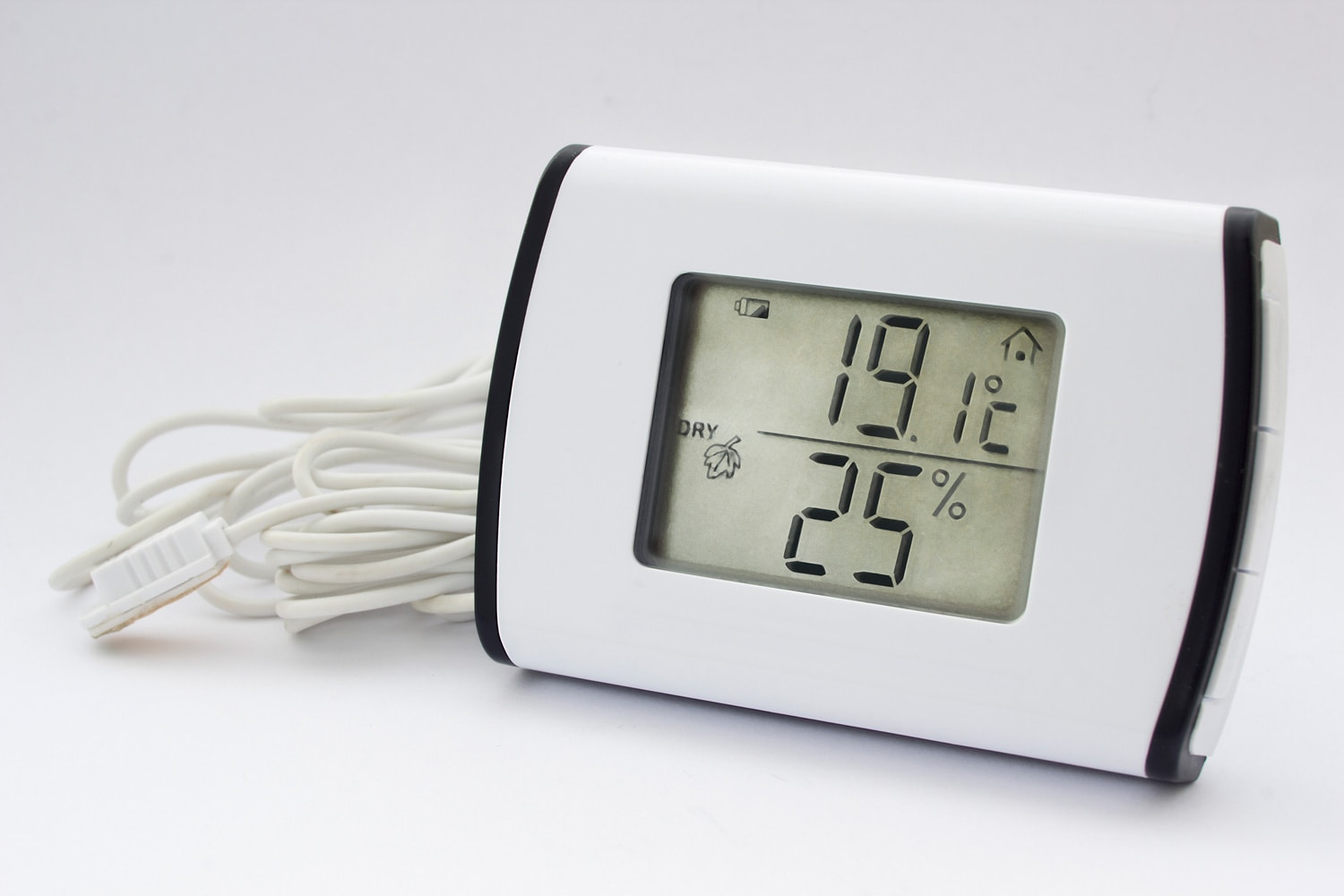In maintaining comfortable air conditions at home, it's necessary to monitor the moisture levels in the air. You can use a hygrometer or humidity sensor to help you with this, but this leads you to the next step, where should you place it? The location of your hygrometer is essential in ensuring it works effectively. We looked it up and have the answers for you in this post!
The best place to put your humidity sensor in a room is in high locations away from windows and doors. That way, external factors cannot disrupt your device from producing accurate readings. If you're deciding where to place it around your home, a few ideal spaces include the bedroom, kitchen, bathroom, basement, and living room.
Where you install your humidity sensor will impact its accuracy, affecting what changes you make to keep humidity levels in a room optimal. Please keep reading to know more about humidity sensors, where they go, and how to set them up.

Should I Have A Humidity Sensor In My Room?

Yes, it's best to have a humidity sensor in your room to keep track of moisture levels going higher or lower. By staying in check with humidity in a room, you can identify what adjustments you need to maintain ideal conditions.
When humidity rises too much in a room, it results in higher condensation, causing moisture to grow mold and mildew around the room. The more it spreads, the more negative impacts it makes. So, a hygrometer is primarily responsible for monitoring your space to inform you when humidity readings get too high or too low.
Besides getting a hygrometer, read this post to learn how to naturally lower humidity: How To Naturally Reduce Humidity In A Room
Benefits Of Having A Humidity Sensor
Although a humidity sensor mainly reports temperature and moisture readings, it can help you with several concerns, including the following.
Reduces Health Problems
A space too dry can cause health problems, such as irritation and skin drying. But with high humidity, mold spores could spread in the air and cause further complications for you and your pets. Under ideal conditions, these chances significantly reduce, protecting you, your family, and the rest of your home.
Prevents Bacteria Growth
Mold and mildew thrive on surfaces when moisture is present, reproducing tiny spores that can travel in the air. While they are generally harmless, they can continue spreading in the right conditions and later cause health issues due to high exposure.
And so, keeping humidity within the appropriate levels will rid bacteria of space to flourish.
Protects Pets And Plants
Most pets can survive in the same temperature conditions as humans, meaning moisture can affect their health too. If you have an exotic pet that needs different living conditions, consider separating them and maintaining the humidity at their required level.
Humidity also affects plant health, wherein dry air can prevent them from growing, and too much moisture produces fungi and root rotting. You can avoid these by regularly checking humidity with a hygrometer.
Keeps Air Comfortable Overall
High humidity can cause the air to feel sticky or produce musty smells from your home's foundation, affecting air quality. When you use a humidity sensor to maintain desirable moisture levels, you also improve comfort within your home.
Learn more about how to control humidity in this post: How To Control Humidity In Home
Types Of Humidity Sensors

Hygrometers come in several types, ranging from simple to advanced models. You can find its variants as follows.
Whole-Home System
A whole-home system usually comes with individual sensors, which you should strategically install around your home. This system is suitable if you want thorough humidity readings across different areas of your house.
Point Source Sensor
Point Source humidity sensors are separate devices made to go in a single space. Because they are individual units, they operate independently rather than as a whole. Experts recommend these for monitoring humidity in specific locations or rooms.
Smart Model System
Humidity sensors are also available in variants offering smart technology. You can usually access and control these by connecting to the Wi-Fi or through a smartphone or computer. Some models also alert you through email or messages when humidity levels go beyond specific points.
Where Should My Humidity Sensor Go?

Generally, your humidity sensor should go where you're most concerned about humidity. For example, if you're worried about it being too humid under your sink, you can put the hygrometer there.
In a room, it's best to place your hygrometer at the top or on surfaces far from windows and doors. Outside factors, such as wind, rain, or sunlight, affect the accuracy of your device's readings. And so, you should install it in a location with unrestricted air circulation.
Avoid placing it close to fans, heating or cooling systems or equipment, or spaces with excessive moisture and devices that heat up for better results. If you'll be mounting it on a wall, keep it at least 4 to 6 feet above the floor.
If you aren't using a whole-home system, keep them in rooms frequently exposed to high humidity like the basement, bathroom, kitchen, bedroom, or living room.
Are Humidity Sensors Reliable?
A study shows that humidity sensors have a good level of accuracy but require adjustments to manage errors. Still, these sensors produce enough accurate results to be considered reliable.
Maintenance is essential to keep the device in top condition and to work effectively, including frequent calibration depending on the level of use and environmental factors.
Most models last a few years, depending on the manufacturer and model type. While they don't fail as often as other devices, their accuracy lowers as time passes.
A Guide To Shopping For Humidity Sensors

Picking a humidity sensor suitable for your space depends on your needs and how it will work in its chosen location. So, here are some of the factors you should consider before purchasing a hygrometer.
Reading Accuracy
Note that the best humidity sensors offer 5% accuracy, while near-perfect models will have accuracy within 1%. The more accurate the sensor reading, the better it will be for making appropriate adjustments to reach the ideal levels.
Even though you can change these with calibration, purchasing a model with good built-in accuracy saves you time and costs.
Display Type
Hygrometers come with two different displays, digital and analog. Most modern models offer digital displays for easier reading, but they could be hard to read from afar. The analog type is more mechanical and easier to read from afar, but it may be hard to determine the exact readings.
Power And Battery
The power source you choose for your sensor will depend on the needs of your space and the length of time you need it running. Consider getting an electrical model if you need it turned on consistently for long periods. If you prefer a portable one, a battery-powered variant is better.
Monitoring Access
Some homeowners need more frequent access to the readings produced by a hygrometer. Fortunately, modern models come with smart technology, such as Bluetooth and Wi-Fi connectivity. You can also find variants that have smartphone applications available where you can access temperature and humidity readings remotely.
Top Humidity Sensor Picks In 2022
You can find lots of great humidity sensors available with different features. Among them, here are a few of the top recommended options.
ThermoPro TP49 Digital Indoor Hygrometer
The ThermoPro TP49 offers a broad measurement range, allowing it to report extreme moisture levels. It tells you the comfort level of your space based on the readings using a face. That way, you can quickly identify changes in humidity.
However, its easy-to-grasp interface tends to be too simple for some homeowners.
Click here to see the ThermoPro TP49 Digital Indoor Hygrometer on Amazon.
Govee H5179 WiFi Thermometer Hygrometer
Govee's H5179 hygrometer comes with convenient Wi-Fi control and connects to the Govee Home app for easier access to humidity data. When connected to a stable connection, it provides quick and accurate updates while alerting you of any drastic changes.
One concern among some homeowners is that it may be challenging to get used to and navigate around.
Check out the Govee H5179 Wi-Fi Thermometer Hygrometer on Amazon.
AcuRite Digital Indoor Hygrometer With Temperature Humidity
This AcuRite digital hygrometer offers enhanced accuracy and responsive readings for adequate humidity control. It features a unique comfort scale, directly displaying the humidity level on the screen.
You can also calibrate the sensor depending on the room or environment to monitor, but it can be tricky to understand the provided instructions.
Get the ACuRite Digital Indoor Hygrometer With Temperature Humidity on Amazon.
Final Thoughts
When deciding where to put a humidity sensor, it usually depends on the location of your concern. In a room, professionals recommend setting it in high places, about 4 to 6 feet from the floor, and away from windows, doors, heating or cooling equipment, and other devices that could disrupt air conditions.



